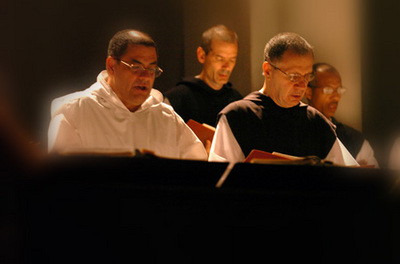
Longtime readers know of my affection for and devotion to the Monastery of the Holy Spirit, the Trappist house outside Atlanta. Flannery O’Connor was a frequent visitor, and Dorothy Day was known to drop by when she was in the area. I have many friends there among the monks, and have visited there several times on retreat. It played a pivotal role, in fact, in my vocation.
Now, there’s word the place is about to undergo a major, multi-million dollar renovation:
Over the weekend of Jan. 30-31, an appeal on behalf of the monastery will be presented in archdiocesan churches. It will describe how the public can help the monks as they reshape their industries in order to meet their current expenses and restore self-sustainability, which is at the heart of their rule of life.
Archbishop Wilton D. Gregory, in a letter to Catholics, says, “The monks have lived from the work of their own hands, first through farming, and more recently from their gift shop and the sale of food products, bonsai trees and stained glass, as well as a green cemetery.”
“In recent years, the monks’ mandate of self-sufficiency has been challenged by the medical costs of caring for their aging brethren,” he says.
However, the monks have responded to the challenges with self-study and a resulting strategic plan to direct their efforts toward rebuilding their industries, he says. It is called a “Season of Renewal.”
“The Monastery of the Holy Spirit remains 40 strong and has the most members making their solemn professions of any monastery in the United States,” the archbishop notes. “To continue to attract those considering monastic life, the monastery is seeking to restore fiscal sustainability, be good stewards of the land entrusted to them, and continue the tradition of spiritual hospitality.”
Over the past four years, with the assistance of outside professionals and after a sustainability study, the monks have developed a long-range vision and plan. It includes the development of a section of their land to welcome even more public visitors than the estimated 80,000 who already come each year, and to extend to them hospitality and insights into the monastic life while protecting the cloistered area where the monks live.
Monks of the Cistercian order, commonly known as Trappists, came in 1944 to Rockdale County from their long-established Gethsemani monastery in Kentucky, so the Catholic presence could be planted in North Georgia.
The pioneer monks lived in a barn for 10 months while they built their first temporary monastery. Then they carved out and built the traditional structures of a monastery: a cloister, dormitories, a library, study rooms, a chapter room where the community meets, dining facilities, a retreat house and eventually a soaring Gothic church. All the while, they sustained the prayer life that is the essence of a monk’s day from 4 a.m. until 9 p.m.
As part of the future plan, a new road into the monastery will lead to a new abbey store, a small café, and a new welcome center. The historic barn where they lived will become part of a new monastic center, where the public can see exhibits on the history of monasticism as well as view restored areas showing how the pioneers lived in early days.
The monastery already sells bonsai trees and tools and has the largest selection of bonsai pottery in the country as well as a mail order business that ships bonsai supplies worldwide. To expand this operation, the current bonsai garden center will be relocated to adjacent barns and a new greenhouse built.
A cloister area where the public can gather will include a piazza. Walking tours of the monastery will leave from this area. A prayer wall will be constructed to mark the boundary between the cloistered area of the monastery, and guide guests from the monastic center to the abbey church.
This rebuilding campaign is estimated to cost $6.5 million. Approximately $3.5 million has already been pledged or contributed by donors. The monastery is now seeking the support of the general public.
The process of developing this plan and seeking public support has been a departure from their traditional life of work and prayer. It has brought out a new awareness of what the monastery provides to the thousands who come each year, both Catholic and non-Catholic, and how vital it is to preserve this.
Abbot Francis Michael Stiteler observes, “This monastery is a sacred place for everybody, for all people.”
“It is a Catholic place. We are decidedly Catholic,” the abbot says. “But our church itself, anybody can come and give themselves to it. People who would never darken a Catholic church come here. It is a place of silence, of solitude. People can come to pray, even if they don’t call it prayer. That is a wondrous thing.”
You can read more at the link.

